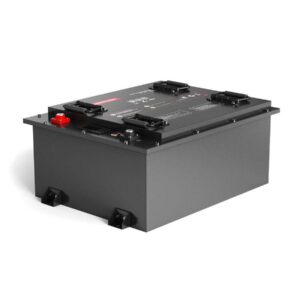
How does a car act when the battery is dying?
A dying car battery typically causes slow engine cranking, dim headlights, and erratic electrical behavior (e.g., flickering dash lights). Key culprits include sulfation buildup, parasitic drains, or age-related capacity loss below 12.4V. Warning signs escalate in cold weather as chemical reactions slow. Pro Tip: Test resting voltage when off—readings under 12.2V signal replacement urgency.
How to Safely Dispose of and Recycle Car Batteries
What are the first signs of a weak battery?
Early symptoms include delayed ignition starts (3+ seconds cranking) and voltage-sensitive features like infotainment resets. Digital clusters may show battery icons or erratic voltage readings between 11V–12V during startup.

Beyond the obvious cranking struggles, a dying battery struggles to maintain stable voltage under load. Modern cars require 9.6V minimum during cranking—anything lower triggers “Check Charging System” warnings. Parasitic drains (e.g., trunk lights, aftermarket trackers) accelerate discharge; a healthy battery loses ≤50mV/day. For example, a 2018 Honda Civic with a weak battery might have working headlights but fail to engage the starter solenoid. Pro Tip: Use a multimeter to measure voltage drop during ignition—if it plunges below 10V, replace immediately.
How do electronics behave with low battery voltage?
Modern vehicles throttle non-essential systems below 11.5V—expect blinking ABS lights, power window lag, or auto-stop/start failures. Infotainment may reboot repeatedly during startup attempts.
Automotive ECUs enter low-power modes at 11.8V, disabling features like seat heaters or rear defrosters. CAN bus communication falters below 11V, causing false error codes (e.g., transmission faults). Hybrid systems are particularly sensitive; Toyota Prius models shut down propulsion if the 12V auxiliary battery drops under 10.5V. Practically speaking, a 2020 Ford F-150 might display “Shift System Malfunction” when the battery can’t power transmission solenoids. Pro Tip: After jump-starting, drive 20+ minutes to recharge—idling often fails to restore deeply drained batteries.
| Symptom | Voltage Range | Fix Priority |
|---|---|---|
| Dim cabin lights | 12.0V–12.4V | Medium |
| ABS warnings | 11.5V–12.0V | High |
| Total no-start | Below 9.6V | Critical |
Why does cold weather worsen battery issues?
Cold thickens battery electrolyte, slashing cranking amps (CCA) by 30–60%. A 600CCA battery at 0°F delivers only ~240CCA—often insufficient for diesel engines or high-compression V8s.
Lead-acid batteries rely on chemical reactions that slow exponentially below 32°F. At -22°F, capacity drops 50%, making even new batteries struggle. Lithium-ion auxiliary batteries (used in some luxury EVs) perform better but cost 4x more. For example, a BMW i3’s 12V LiFePO4 battery maintains 80% capacity at -4°F versus 35% for AGM. Pro Tip: Park in garages during winter—every 15°F increase doubles effective CCA.
What Is the Best Battery for a Diesel Pickup Truck?
Can a dying battery damage other components?
Yes. Chronic undercharging accelerates alternator wear, while voltage spikes from failed cells can fry ECUs or ABS modules. Repeated deep cycles also warp lead plates, causing internal shorts.
Alternators work harder to recharge weak batteries, often overheating rectifier bridges. A 150A alternator pushing 100A continuously may fail within 6 months versus the typical 5-year lifespan. Voltage spikes above 15V—common during battery cell failures—can destroy sensitive electronics like turbo controllers. For instance, multiple VW TDI owners reported blown instrument clusters after ignoring battery warnings. Pro Tip: Install a surge protector (e.g., NOCO GC018) if your battery tests below 12V regularly.
| Component | Risk Level | Repair Cost |
|---|---|---|
| Alternator | High | $350–$900 |
| ECU | Critical | $800–$2,200 |
| Fuel Pump | Medium | $300–$600 |
Battery Expert Insight
FAQs
Can you jump-start a completely dead battery?
If voltage is above 8V, yes. Below 8V, internal damage likely requires replacement—jump-starting may only provide temporary operation.
How often should car batteries be replaced?
Every 3–5 years, depending on climate and usage. Test monthly if over 2 years old; replace if resting voltage consistently under 12.4V.
